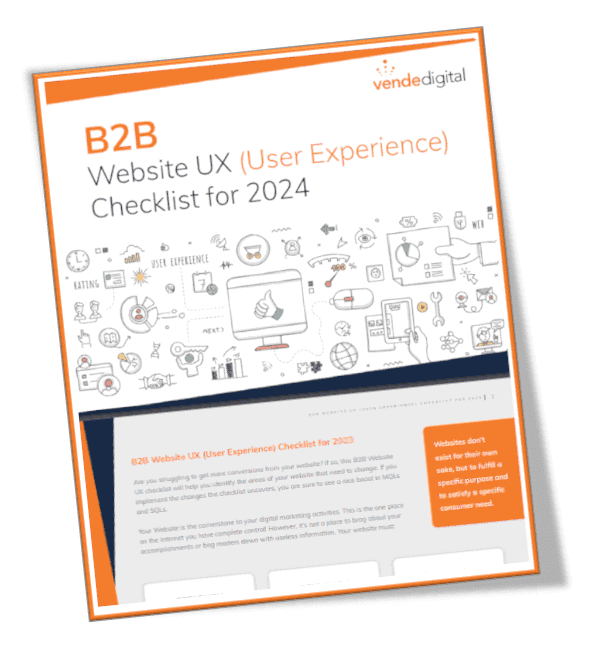You’ve seen the hype. AI is the golden retriever of the digital world right now—loyal, hardworking, and everyone wants one. But just like bringing home a puppy, not everyone knows how to handle it. Slapping a chatbot on your homepage and calling it a day? That’s not genius, that’s guessing.
If your “AI-powered website” isn’t showing results, don’t worry. You’re not alone, and we’ve got the tools to help. Today, we’re calling out three major B2B AI website mistakes brands make and giving you a roadmap to transform your site into an AI-driven conversion machine. Spoiler alert: It’s not as hard as you think.
Quick Snapshot: The Top 3 B2B AI Website Mistakes
❌ 1. Adding AI Without a Strategy
Because “winging it” is not a business plan.
❌ 2. Failing to Train AI on Your Content
Your brand deserves better than robot ramblings.
❌ 3. Ignoring AI Buyer Intent Data
Your AI is showing you the treasure map, and you’re not even looking.
Sound familiar? Stick with us. We’re about to set your AI straight.
Mistake #1: Adding AI Without a Strategy
“I saw AI trending online, so I added an assistant to the homepage. Now what?”
If this sounds like you, it’s time for a reality check. Randomly adding AI is like giving a puppy a shiny new toy, but forgetting to teach it how to play. It might look exciting, but it’s not doing anything productive without the right guidance.
Why It Fails
When AI has no clear purpose, it confuses your visitors and erodes trust. What started as an attempt to enhance UX becomes a frustration amplifier instead. Instead of enhancing your website, this B2B website mistake turns potential leads away.
How to Fix It:
- Define a Clear Role: Decide what problem AI solves on your website. Does it handle FAQs? Qualify leads? Provide pricing details? You need a plan.
- Strategic Placement: Think beyond your homepage. Position AI tools on high-value pages like product walkthroughs or pricing FAQs.
- Set Metrics: Measure engagement and conversion rates to determine if your AI setup is driving visible results.
AI without a strategy is just noise. Make yours count. Think strategy first. That’s how you avoid the #1 AI website mistake.
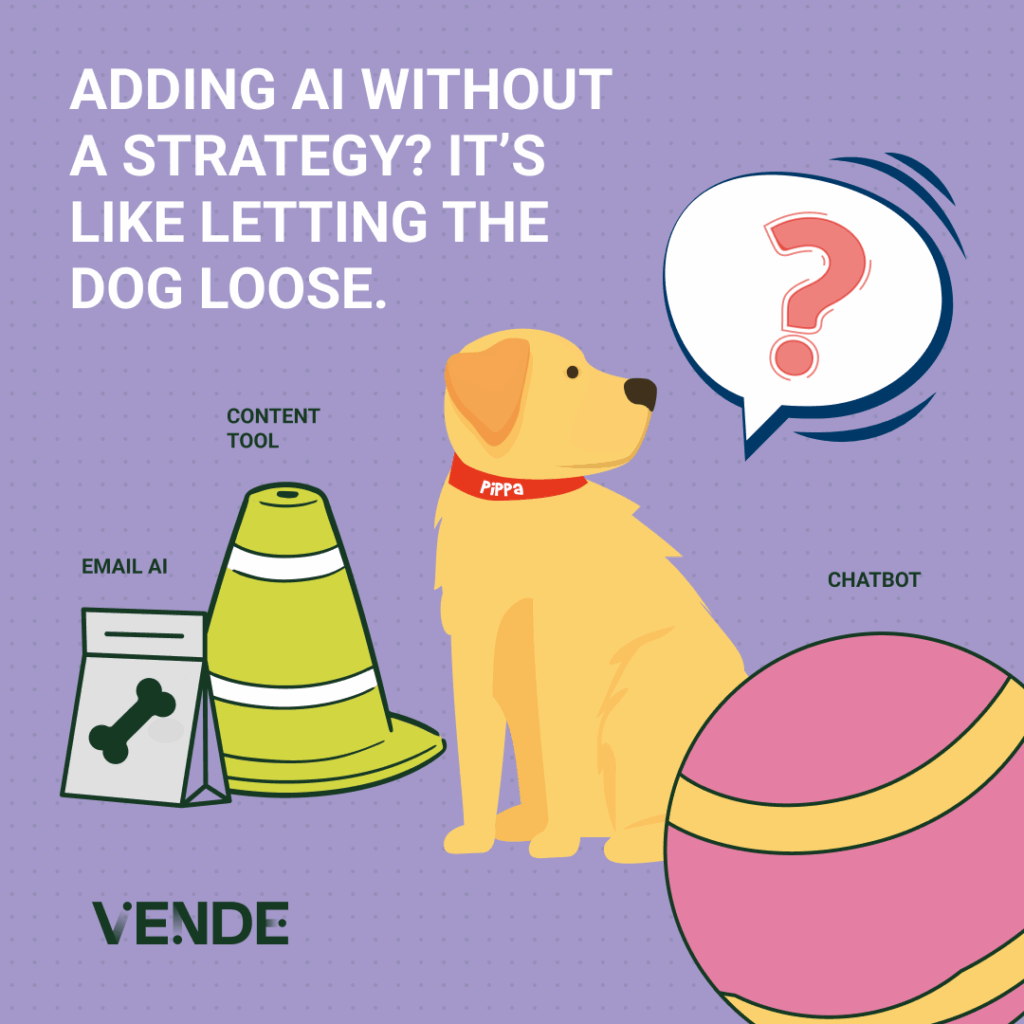
Mistake #2: Failing to Train AI on Your Own Content
Imagine this scenario. A prospect asks your AI assistant a detailed product question. The response? “I’m not sure, check our resources page.” Cue the world’s fastest bounce rate.
Why It Fails
AI is not a mind reader. Without proper training, it’s like sending an intern to a sales pitch without preparation. The result? Useless or vague responses that make your brand look unprofessional.
How to Fix It:
- Curate High-Impact Content: Load your AI assistant with FAQs, blog posts, case studies, and other top-performing resources. Think of content like fuel for your AI.
- Stay Updated: Your messaging evolves; so should your AI. Regularly refine the content it pulls from based on product updates or new campaign focus.
- Smart Tech Tools: Platforms like Navu allow structured training so your AI speaks your language. Tools like these boost accuracy and help keep AI on-brand.
One of Navu’s clients saw this brilliance first-hand and avoided this AI website mistake by equipping their assistant with technical answers from their library of PDFs. A buyer asked about New York environmental approvals for a product, and the AI delivered a detailed, accurate answer drawn from the site’s technical documents. No puzzles, no delays.
Want AI to assist in closing deals? Treat it like a loyal pup. Train it well, and it’ll fetch you results every time.
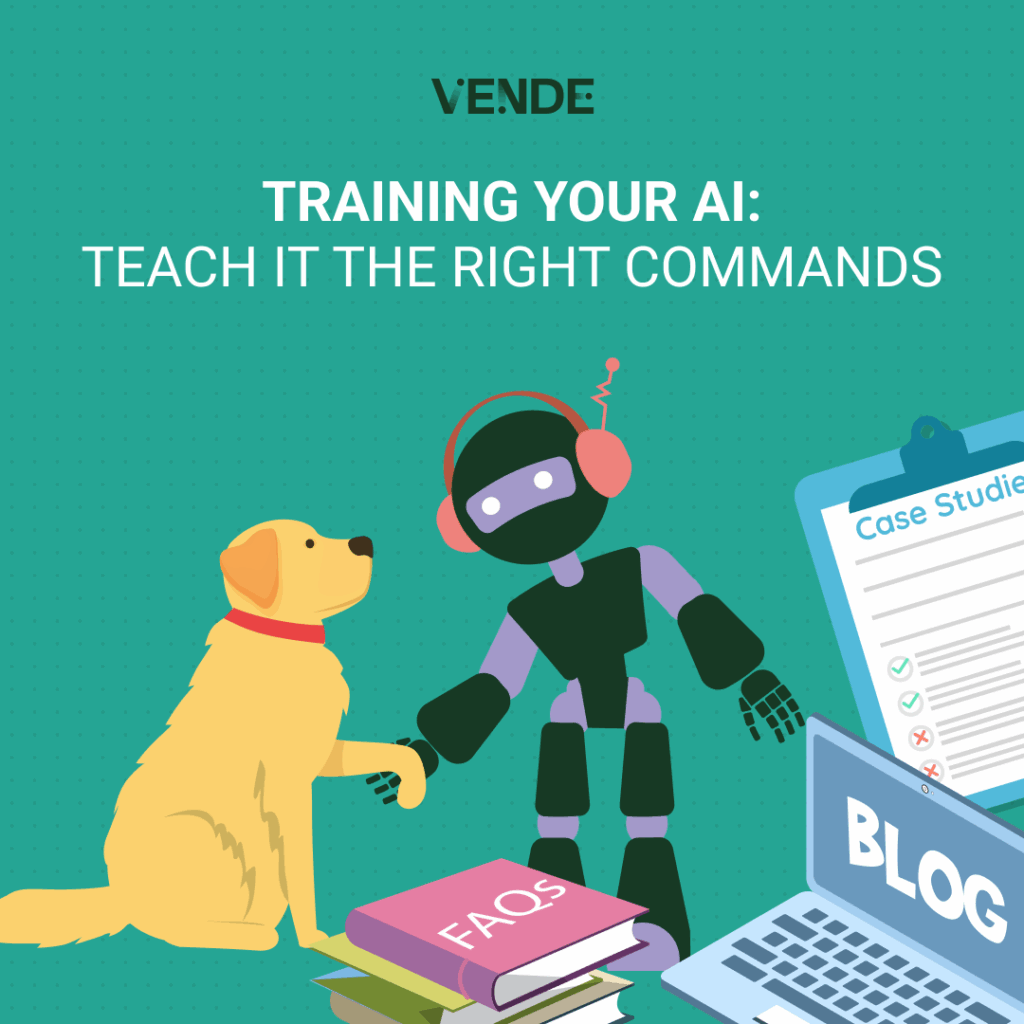
Mistake #3: Ignoring AI Buyer Intent Data
There’s a dirty secret about AI in marketing. It’s collecting buyer data like a digital Sherlock Holmes, but it’s all pointless if no one’s looking at it. Buying signals, FAQs, page visits… they’re all just sitting there, waiting to accelerate your sales pipeline.
Why It Fails
Failing to integrate AI data into your sales and marketing systems is like having a dog that sleeps through all the action. Without action, those insights just sit there, unused and wasted.
How to Fix It:
- Integrate AI Data with Your CRM/MAP: Make sure your team can access buyer questions and behavior data in real time, straight from tools like HubSpot or Salesforce.
- Analytics That Drive Action: What questions do buyers ask most? Use this data to shape blog topics, email drip campaigns, and sales enablement tools.
- Empower Your Sales Team: Arm reps with insights about prospects (e.g., what features they care about), so follow-ups feel consultative, not generic.
Ignoring buyer intent is one of the most critical AI website mistakes that B2B brands commit. Instead of letting these insights gather dust, turn them into actionable strategies that push leads through the funnel.
At Navu-powered brands, sales teams reported quicker onboarding thanks to AI tools that doubled as customer-facing assistants and internal training aids. Now that’s ROI.
Proactive learning beats passive waiting every time. Use those AI insights.
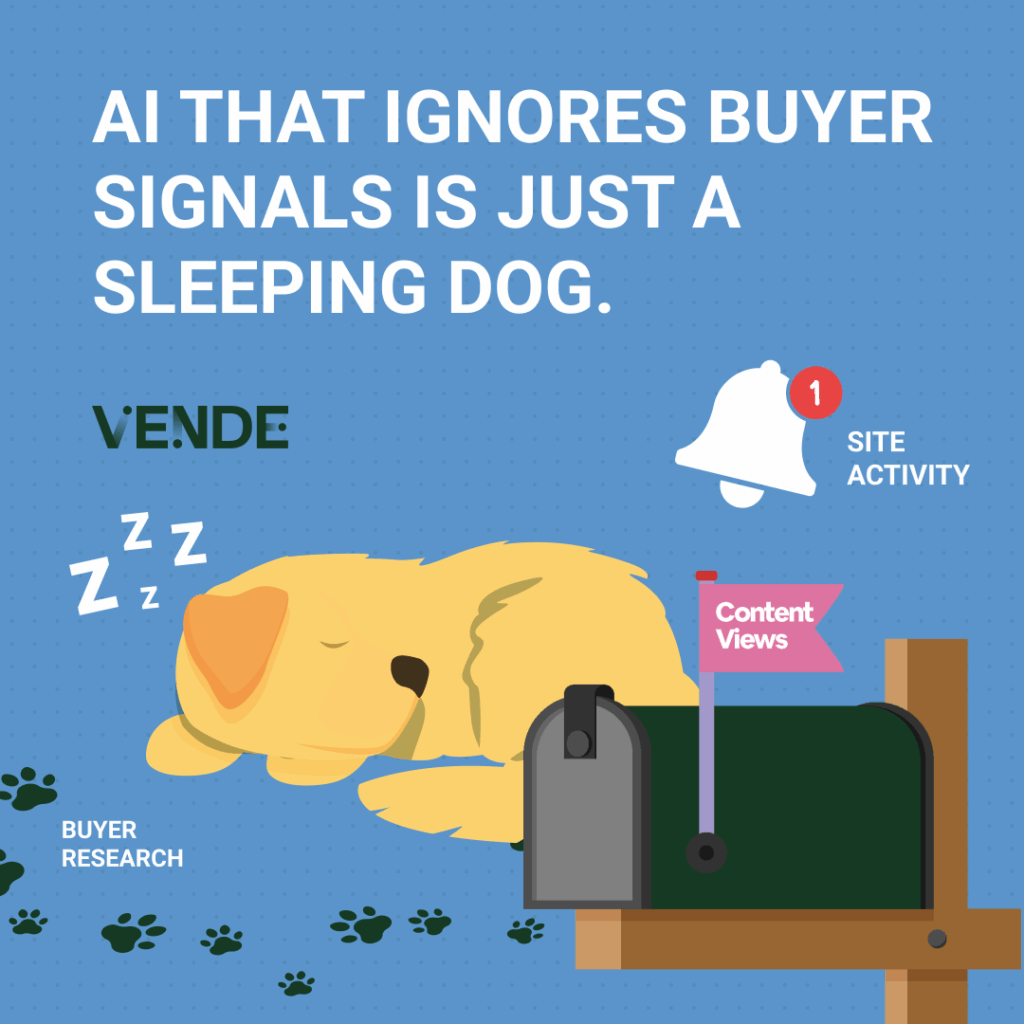
The Fix Formula for AI Website Sucess: Strategy → Training → Integration → Iteration
Want better results? Here’s how to make your AI work smarter:
- Strategy: Give your AI an intention tied to marketing goals.
- Training: Feed it the best. Think case studies, buyer-aligned FAQs, and product walkthroughs.
- Integration: Plug AI insights into analytics, CRMs, and marketing platforms.
- Iteration: Refine and expand content coverage as you gather feedback.
Step, step, step, scale. Easy peasy.
Your B2B website mistakes don’t have to define your online presence. By addressing these challenges, your site will work harder and smarter.
Smarter AI for a Smarter Website
Here’s how to get your AI assistant doing real work:
- Start with high-touch pages like demos, pricing breakdowns, and product FAQs.
- Offer answers faster. Visitors bounce if they wait longer than 10 seconds.
- Build in support handoffs. If AI can’t answer, make sure a human can.
- Measure, tweak, repeat. If engagement isn’t turning into conversions, dig deeper into the data.
Your AI should solve problems, not just flash icons. Pairing it with a full-funnel video strategy can boost engagement and help guide buyers through every stage, making your site work harder and smarter.
Remember, AI is like a well-trained dog.It handles the groundwork with precision and reliability. But building relationships? That’s still your team’s job. Together, you’re the perfect partnership, ready to tackle any challenge.
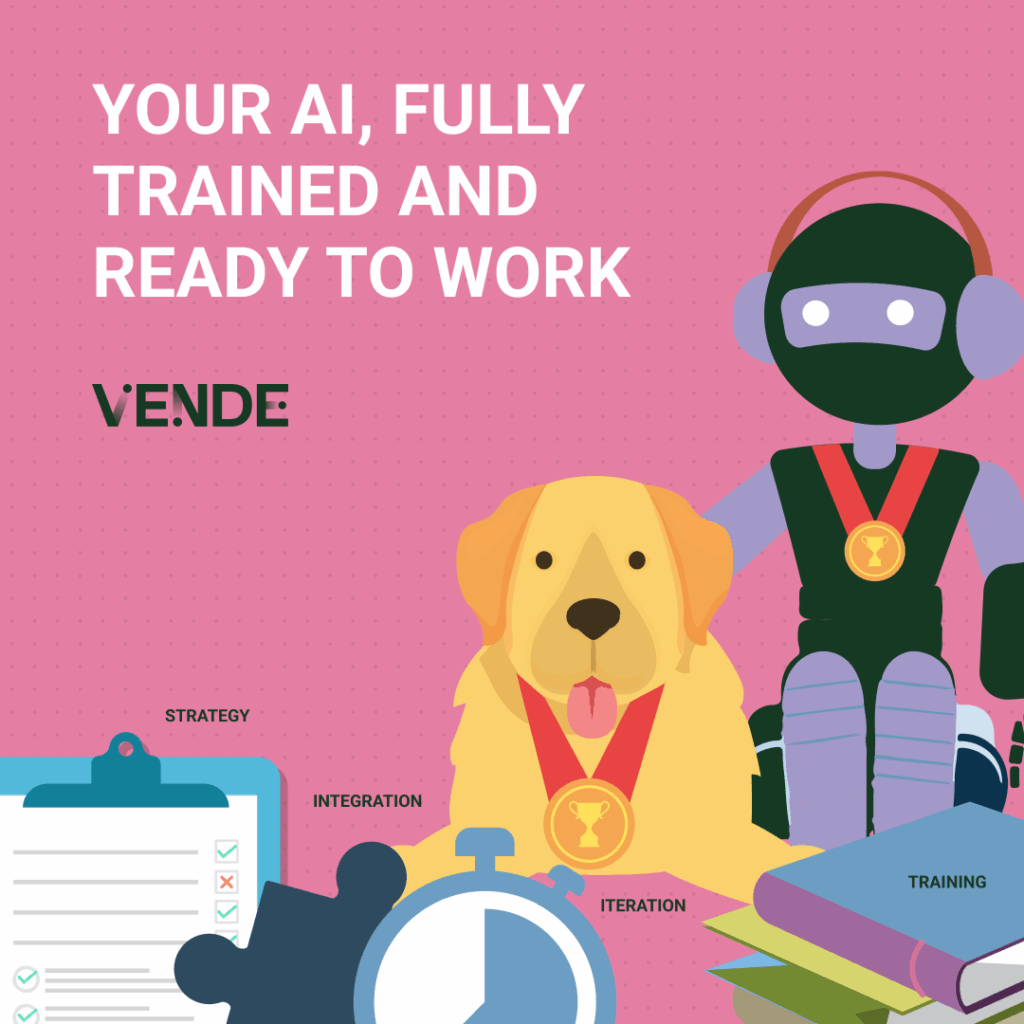
Key Takeaways
Randomness, neglect, and inaction ruin AI implementations. But the good news? These AI website mistakes are fixable, and the path to improvement is clear.
Strategic Summary
- Random AI implementations waste time and resources.
- Smart AI setups enhance UX, provide buyer insights, and grow conversions.
- The secret? Strategy, clarity, and continuous improvement.
Actionable Fixes
✅ Align AI tools with page-specific goals and user needs.
✅ Train it like you would an employee with curated content.
✅ Use insights to create smarter campaigns and strengthen sales/marketing collaboration.
✅ Evaluate and improve your AI iteratively, not just once.
Want a website that helps close deals faster? AI is the ally you didn’t know you needed.
Let’s make AI work smarter, not just louder
